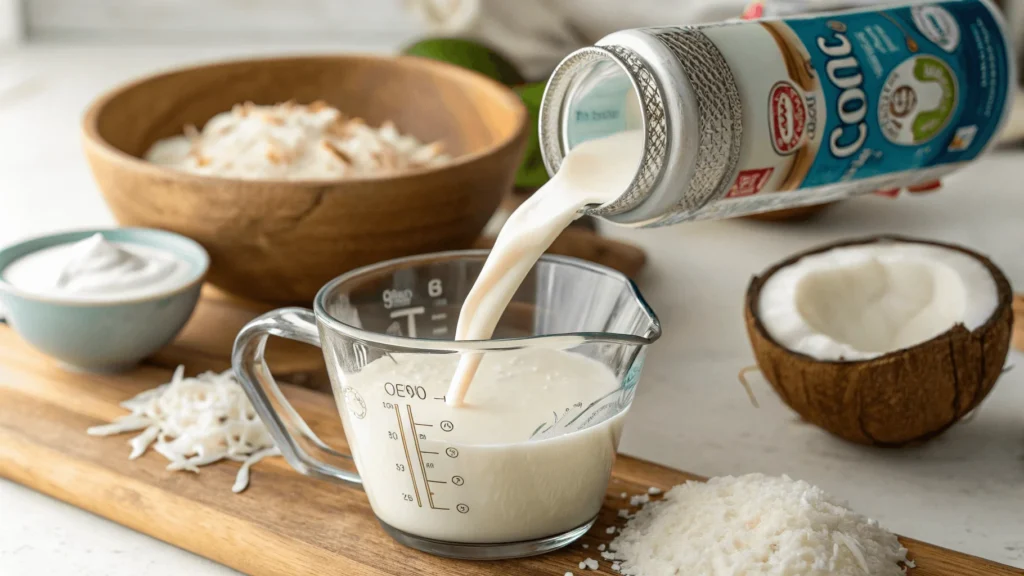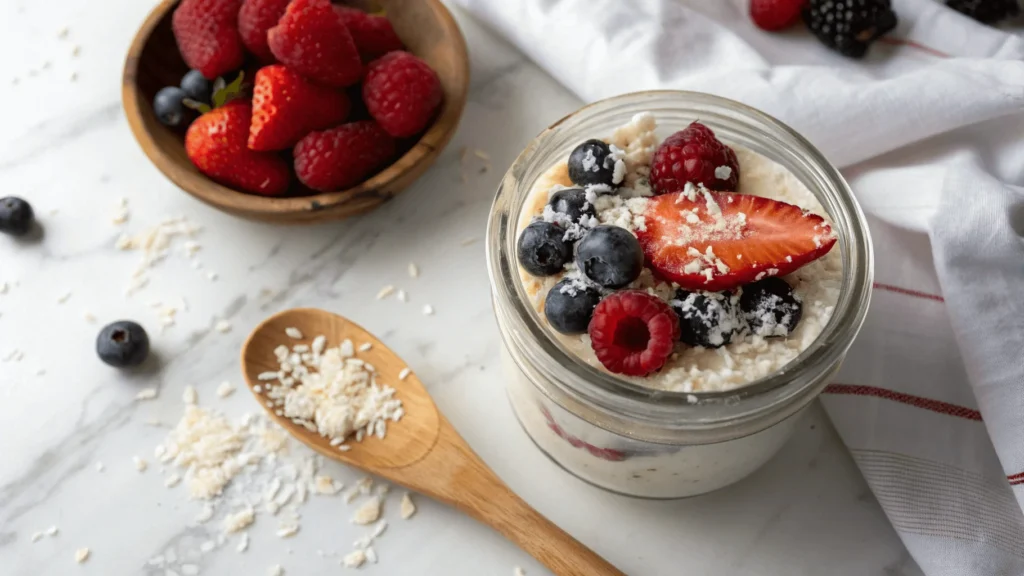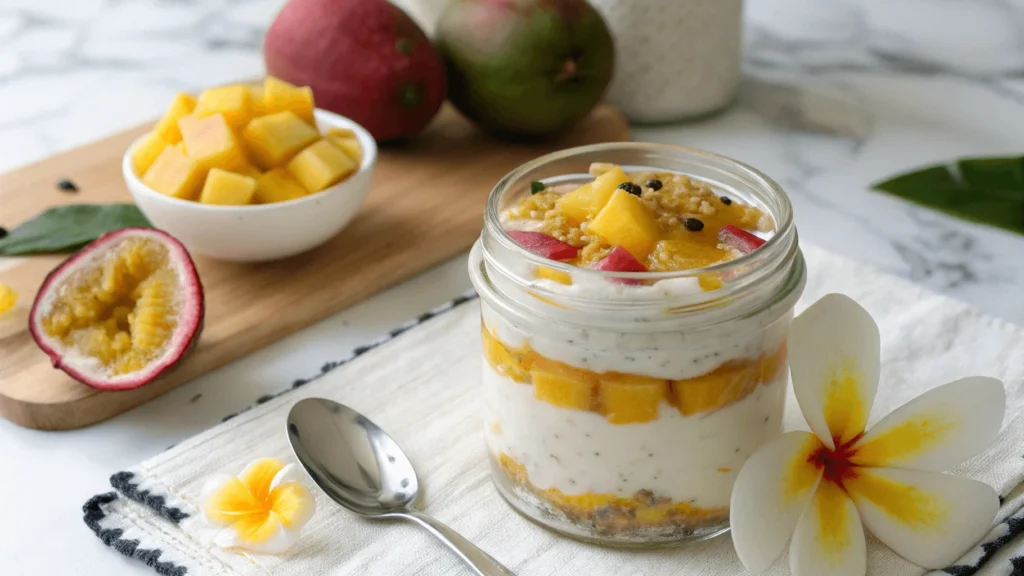Coconut milk is a beloved ingredient in many desserts, especially puddings. Its rich, creamy texture and delightful flavor can elevate your dishes. However, when you’re making a pudding, the thickness of the coconut milk can make or break the recipe. In this article, we’ll explore how to thicken coconut milk for pudding effectively, ensuring you achieve that perfect creamy consistency. From understanding the basics of coconut milk to various thickening methods and delicious recipes, we’ve got you covered.
Understanding Coconut Milk

What is Coconut Milk?
Coconut milk is a creamy liquid made from the grated flesh of mature coconuts. It’s often confused with coconut cream, but there’s a key difference. While coconut cream is thicker and richer, coconut milk has a more fluid consistency. This makes it versatile for cooking and baking, especially in dishes like curries, soups, and, of course, puddings.
Nutritional Benefits of Coconut Milk
Not only does coconut milk add a delightful flavor to your dishes, but it also packs a punch when it comes to nutrition. It’s rich in medium-chain triglycerides (MCTs), which are healthy fats that can provide quick energy. Additionally, coconut milk is dairy-free, making it an excellent choice for those with lactose intolerance or those following a vegan lifestyle. Learn more about using coconut milk in desserts to explore its versatility and how to use it effectively.
Understanding what coconut milk is and its benefits sets the stage for our exploration of how to thicken coconut milk for pudding. Knowing the differences between coconut milk and coconut cream will help you choose the right ingredient for your pudding recipes. In the next section, we’ll delve into why thickness is crucial for pudding texture.
Why Thicken Coconut Milk for Pudding?
The Role of Thickness in Pudding Texture
When it comes to puddings, thickness plays a vital role in achieving the right texture. A well-thickened pudding should be creamy and smooth, not runny or watery. So, if you’re wondering how to thicken coconut milk for pudding?, it’s essential to understand that the thickness affects not only the taste but also the overall mouthfeel. A thick pudding feels luxurious and satisfying, making each bite a delight.
Common Issues with Thin Coconut Milk
Using thin coconut milk can lead to a disappointing dessert. If your pudding is too thin, it may not set properly, leaving you with a soupy mess instead of a delicious treat. This is especially true if you’re aiming for a rich, creamy pudding. To avoid this, you might want to consider thickening agents or techniques that can help you achieve that desired consistency. In the next part, we’ll explore various methods to effectively thicken coconut milk, ensuring your pudding turns out perfect every time.
For more tips on perfecting coconut-based desserts, check out our guide on why coconut pudding might not set, which offers practical solutions to common issues.
Methods to Thicken Coconut Milk
Using Cornstarch
One of the most popular ways to thicken coconut milk is by using cornstarch. It’s simple and effective. To do this, mix about one tablespoon of cornstarch with two tablespoons of cold water to create a slurry. Once you have this mixture, gradually add it to your heated coconut milk while stirring continuously. This method not only thickens your pudding but also keeps it smooth. Just remember, if you’re asking how to thicken coconut milk for pudding?, cornstarch is a reliable choice!
Using Arrowroot Powder
Arrowroot powder is another excellent thickening agent. It’s gluten-free and works similarly to cornstarch. To use arrowroot, mix one tablespoon with two tablespoons of cold water, just like with cornstarch. Then, add it to your coconut milk while it’s heating. Arrowroot has the added benefit of maintaining a clear appearance in your pudding, making it visually appealing. Plus, it thickens at a lower temperature than cornstarch, which can be a bonus.
Using Agar-Agar
If you’re looking for a plant-based alternative, agar-agar is your go-to. This seaweed-derived gelling agent is perfect for thickening coconut milk. To use agar-agar, dissolve one teaspoon in a cup of boiling coconut milk, then let it cool slightly. As it cools, it will thicken up nicely. This method is especially great if you want a firmer pudding. Just be cautious, as using too much can make your pudding too gelatinous.
Using Gelatin
For those who aren’t vegan, gelatin is another option to thicken coconut milk. Simply sprinkle one tablespoon of powdered gelatin over two tablespoons of cold water and let it sit for a few minutes to bloom. After that, heat your coconut milk and stir in the bloomed gelatin until it’s fully dissolved. This method creates a creamy, smooth texture that’s hard to beat. However, keep in mind that gelatin is not suitable for vegan recipes, so choose accordingly.
Reducing Coconut Milk
Another straightforward method to thicken coconut milk is by reducing it. To do this, simply simmer your coconut milk over low heat. As it cooks, the water will evaporate, leaving behind a thicker, creamier consistency. This method intensifies the flavor, making your pudding even more delicious. Just be sure to stir occasionally to prevent it from burning or curdling. If you’re curious about how to thicken coconut milk for pudding?, reducing is a natural and effective way.
By using these methods, you can easily achieve the desired thickness for your coconut milk pudding. Each technique has its own benefits, so feel free to experiment and find what works best for your taste and dietary needs. In the next part, we’ll dive into some delicious recipes that highlight the wonderful world of coconut milk pudding!
Recipes for Coconut Milk Pudding
Basic Coconut Milk Pudding Recipe

Now that you know how to thicken coconut milk for pudding, let’s put that knowledge to work with a simple recipe. Here’s a basic coconut milk pudding that you can customize to your taste!
Ingredients:
- 2 cups of full-fat coconut milk
- 1/4 cup of sugar (adjust to taste)
- 1/4 cup of cornstarch (or your preferred thickening agent)
- 1 teaspoon of vanilla extract
- A pinch of salt
Instructions:
- In a saucepan, combine the coconut milk, sugar, and salt. Heat over medium-low until warm, but not boiling.
- In a small bowl, mix the cornstarch with a few tablespoons of cold water to create a slurry.
- Gradually add the slurry to the warm coconut milk, stirring constantly. This is where the magic happens—watch it thicken!
- Continue to stir until the mixture starts to bubble and thickens to your desired consistency.
- Remove from heat and stir in the vanilla extract.
- Pour the pudding into serving dishes and refrigerate for at least two hours before serving.
For other creative recipes, such as tropical-inspired variations, check out our comprehensive coconut pudding recipes to expand your dessert repertoire.
Variations of Coconut Milk Pudding

Once you’ve mastered the basic recipe, feel free to experiment with flavors! Here are a couple of delicious variations:
- Chocolate Coconut Pudding: Add 1/4 cup of cocoa powder to the coconut milk mixture before thickening. This will give your pudding a rich chocolate flavor that’s irresistible.
- Tropical Fruit Coconut Pudding: Mix in some fresh fruit like mango or pineapple after thickening. This adds a refreshing twist that pairs perfectly with the creamy coconut base.
These variations not only enhance the flavor but also make your pudding visually appealing. So, whether you stick to the classic or try something new, you’ll be delighted with the results!
Tips for Perfect Coconut Milk Pudding
Choosing the Right Coconut Milk
When it comes to making the best pudding, selecting the right coconut milk is crucial. Full-fat coconut milk is ideal for a rich, creamy texture. If you use light coconut milk, your pudding may end up too thin. So, if you’re wondering how to thicken coconut milk for pudding?, start with full-fat coconut milk for the best results.
Common Mistakes to Avoid
To ensure your pudding turns out perfectly, avoid these common pitfalls:
- Overcooking: Cooking the pudding too long can cause it to curdle or become grainy. Keep an eye on it and remove it from heat as soon as it thickens.
- Adding Thickening Agents Too Late: Always add your thickening agents while the coconut milk is warm. This helps them dissolve properly and prevents lumps.
By following these tips, you can create a delicious coconut milk pudding that’s sure to impress. For more delicious recipes, check out our recipe article on coconut-based desserts!
Storing Coconut Milk Pudding
How to Store Leftover Pudding
Once you’ve made your delicious coconut milk pudding, you might have some leftovers. Storing it properly is key to keeping it fresh and tasty. First, let the pudding cool to room temperature before covering it. Use an airtight container to prevent any odors from the fridge affecting its flavor.
You can store your pudding in the refrigerator for up to three days. Just remember, if you notice it thickening even more in the fridge, that’s normal! If it becomes too thick, simply stir in a little coconut milk or water to loosen it up before serving.
Reheating Coconut Milk Pudding
If you prefer your pudding warm, you can gently reheat it. Place it in a saucepan over low heat, stirring frequently. Avoid boiling it, as this can change the texture. If you’re curious about how to thicken coconut milk for pudding? during reheating, adding a splash of coconut milk can help regain that creamy consistency.
By following these storage tips, you can enjoy your coconut milk pudding for days to come, making it a convenient and delicious treat!
FAQs
1. What is the best way to thicken coconut milk for pudding?
The best way to thicken coconut milk for pudding is to use a thickening agent like cornstarch or arrowroot powder. Simply mix the thickening agent with a bit of water to create a slurry, then add it to your warm coconut milk while stirring continuously until it thickens.
2. Can I use light coconut milk for pudding?
While you can use light coconut milk, it may result in a thinner pudding. For a richer and creamier texture, full-fat coconut milk is recommended. If you do use light coconut milk, consider adding a thickening agent to achieve the desired consistency.
3. How long does coconut milk pudding last in the fridge?
Coconut milk pudding can be stored in the refrigerator for up to three days. Make sure to keep it in an airtight container to maintain its freshness and prevent it from absorbing any odors.
4. Can I freeze coconut milk pudding?
Yes, you can freeze coconut milk pudding, but the texture may change upon thawing. To freeze, place it in a freezer-safe container, leaving some space for expansion. When you’re ready to eat it, thaw it in the refrigerator and stir well before serving.
5. What can I add to coconut milk pudding for flavor?
You can enhance the flavor of coconut milk pudding by adding vanilla extract, cocoa powder, or fresh fruits like mango or pineapple. Spices like cinnamon or nutmeg can also add a delightful twist.
6. Is there a vegan option for thickening coconut milk pudding?
Yes, vegan options include using cornstarch, arrowroot powder, or agar-agar. These thickening agents work well and can replace gelatin in recipes, making them suitable for vegan diets.
7. How can I prevent lumps when thickening coconut milk?
To prevent lumps when thickening coconut milk, always mix your thickening agent with a small amount of cold water to create a slurry before adding it to the warm coconut milk. Stir continuously to ensure it combines smoothly.
8. Can I use coconut cream instead of coconut milk for pudding?
Yes, you can use coconut cream for a richer and thicker pudding. However, you may need to adjust the amount of sweetener and thickening agent since coconut cream is denser than coconut milk.
Feel free to reach out if you have any more questions or need further clarification on making coconut milk pudding!
Conclusion and Final Thoughts
Recap of Key Points
In this article, we’ve explored how to thicken coconut milk for pudding? We discussed the importance of thickness in pudding texture, various thickening methods, and even shared some delightful recipes. By using ingredients like cornstarch, arrowroot powder, or gelatin, you can easily achieve that perfect creamy consistency every time.
Embracing Coconut Milk in Your Cooking
Coconut milk is not just for puddings; it’s a versatile ingredient that can enhance many dishes. Whether you’re making soups, curries, or desserts, knowing how to work with coconut milk can elevate your cooking. So, don’t hesitate to experiment with flavors and techniques!
In conclusion, with the right knowledge and tips, you can create delicious coconut milk puddings that are sure to impress. For additional tips and recipes, explore our other articles on making coconut milk-based desserts.





